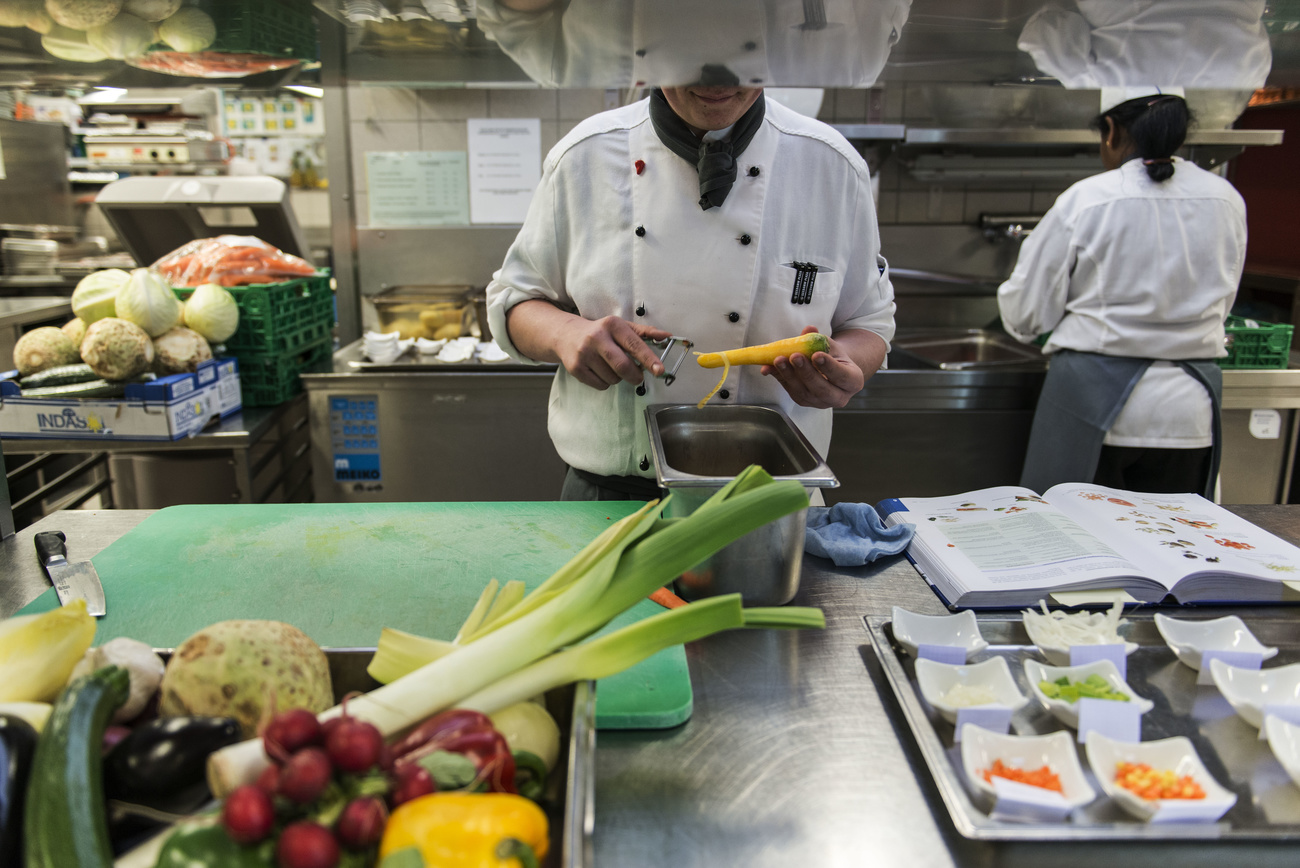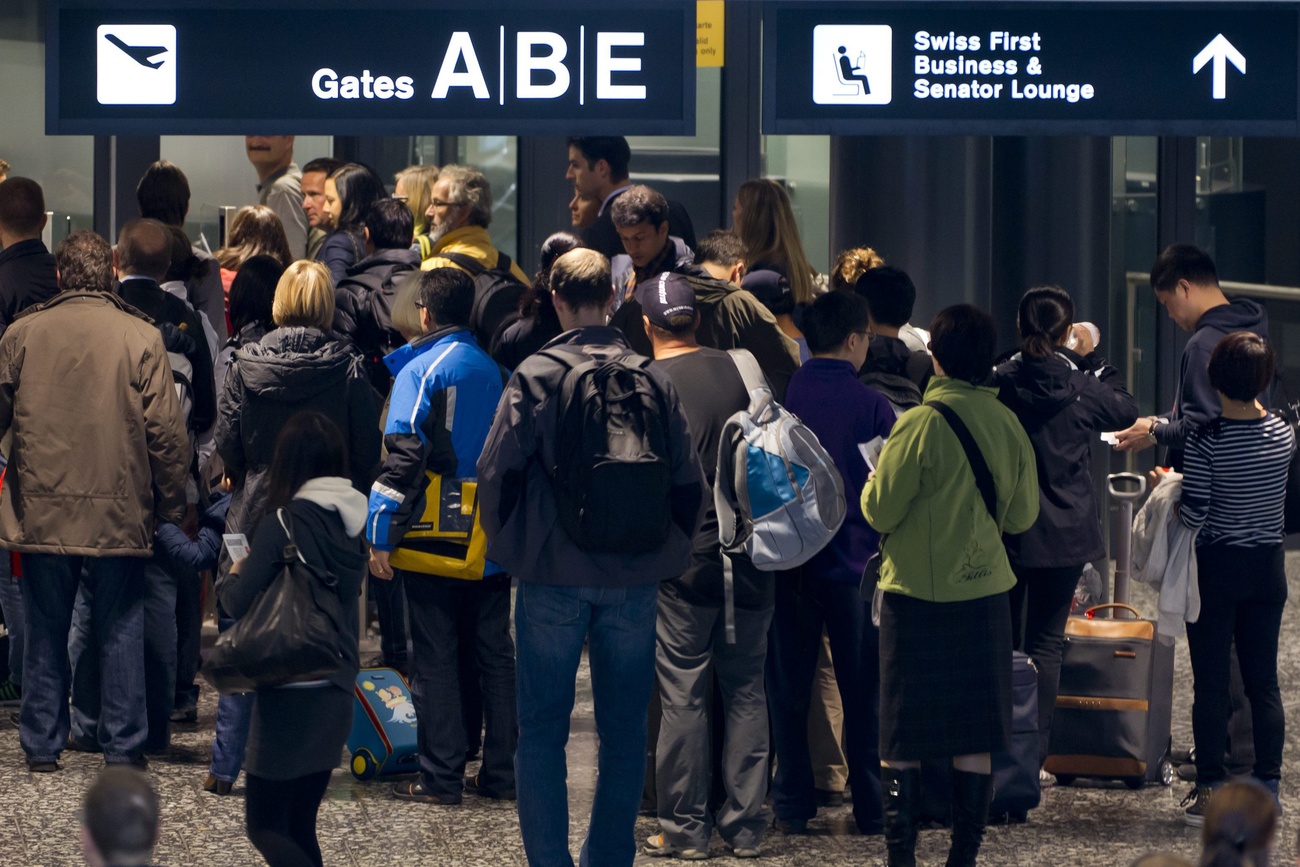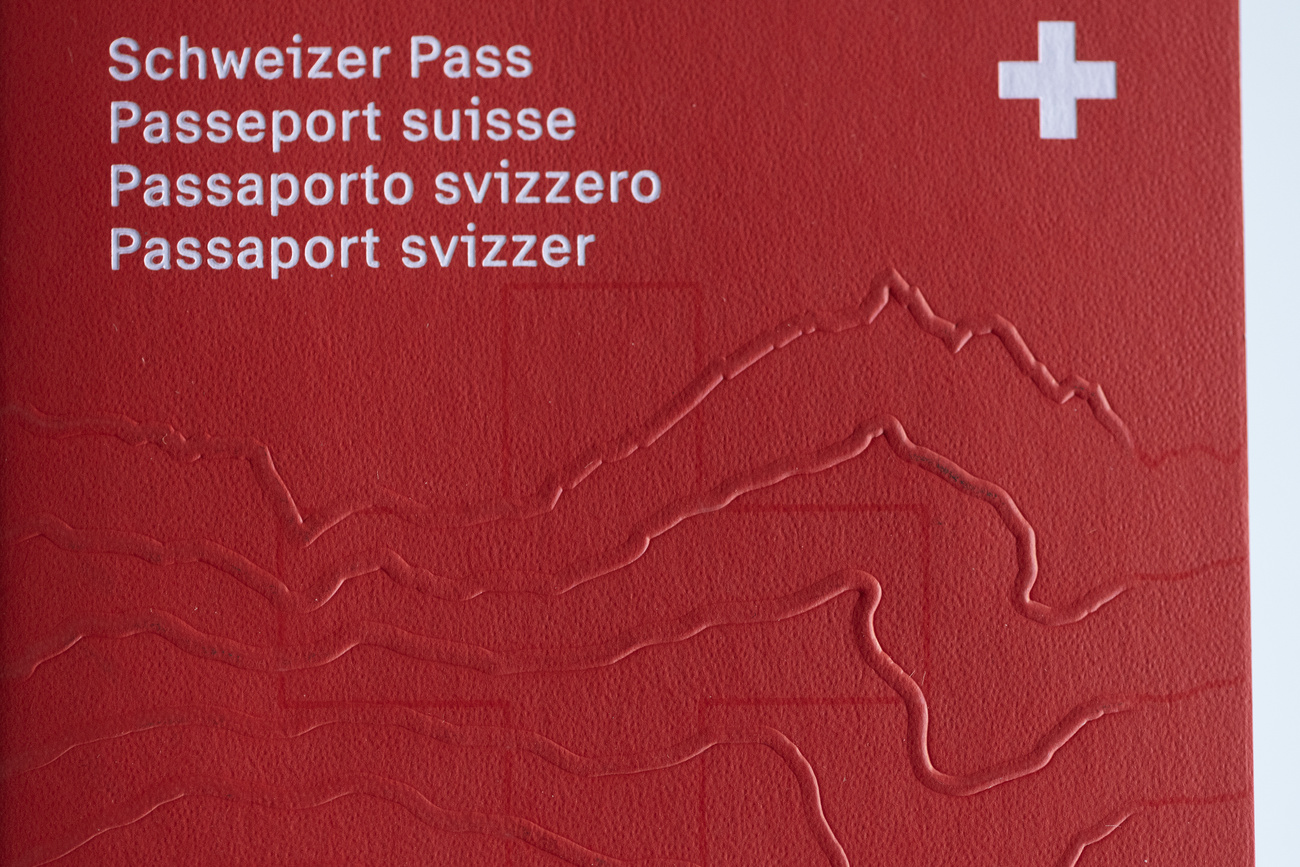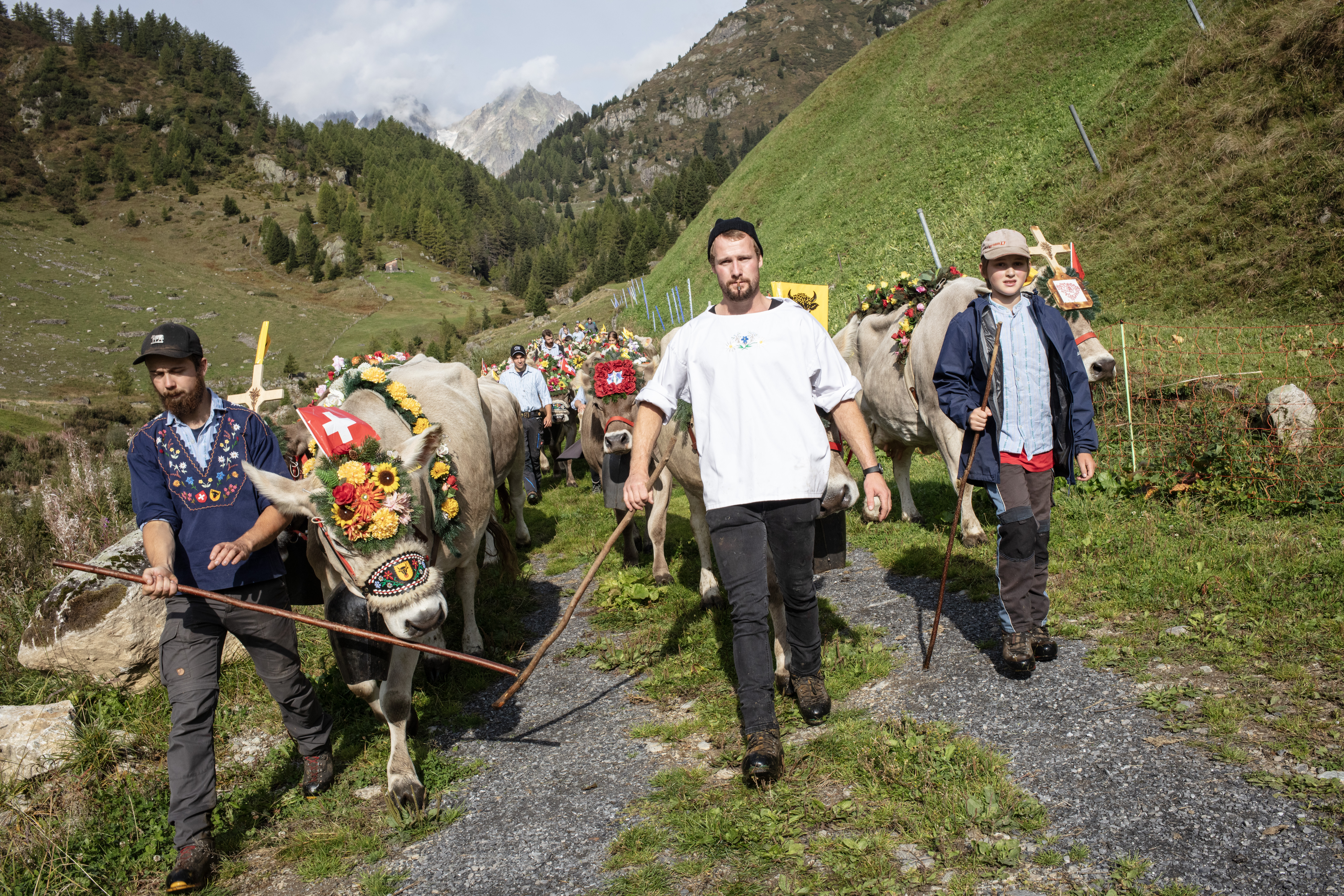
In Switzerland four out of ten people have a migrant background – who are they?

Migration is increasingly shaping Swiss society. The proportion of the country's population with an immigrant background is one of the highest in the world. Almost 2.5 million people do not have Swiss nationality, and even more have foreign origins. Where do they come from, and what are their profiles and career paths? An exploration in graphics.
This article is part of our “In Data” series devoted to immigration, a hot topic in Switzerland, as in most developed countries. An analysis of the figures can help provide a clearer understanding and deconstruct certain preconceived notions.
To give one example, in a previous article in this series we discussed the tens of thousands of foreign nationals who leave Switzerland every year.
A total of 1.8 million foreign nationals moved to Switzerland between 2014 and 2023. Although many of them leave after a few years (see the article below), cumulative net immigration at the end of this period still amounted to more than 1 million, according to the Federal Statistical Office.
>>Many of the people who immigrate to Switzerland end up leaving again. Read the article below to find out more:

More
In Switzerland, migration isn’t just inbound
This phenomenon is far from new. Switzerland has experienced strong immigration since the end of the 19th century, in three successive major waves: the industrialisation phase leading up to the First World War; the economic recovery of the mid-20th century, with a peak in the 1960s; and the current era of free movement with the European Union and globalisation, since the early 2000s.
Immigration is a constant preoccupationExternal link for both the general public and politicians. Coupled with a low fertility rate, it has been the main driver of demographic change for several decades. The face of modern society reflects this.
40% of the population has a migrant background
Around 3 million people over the age of 15 had a migration backgroundExternal link by the end of 2023, i.e. 4 out of 10. This proportion has been rising year on year for the last ten years: in 2012, it stood at 35%.
Of these, 2.4 million were born abroad and immigrated to Switzerland. These so-called first-generation migrants represent almost a third of the adult population. This is one of the highest proportions in the world, only exceeded in a handful of countries including the Gulf states and city-states such as Singapore and Luxembourg.
The 600,000 or so “segundos” are also considered to have a migrant background: this second generation is made up of people born in Switzerland but whose parents were born abroad.
One person in four is a foreigner
Immigration and nationality are two separate concepts. Of all people with a migration background, more than a third are Swiss, either by naturalisation or birth. This is the case for a minority of the first generation (less than 30%), and a majority of the second generation (70%).
Conversely, several thousand people of foreign origin who have lived in Switzerland for at least three generations – and who are therefore not considered to have migrated – do not have Swiss citizenship.
The acquisition of Swiss nationality is subject to blood law and is particularly restrictiveExternal link. We also know that certain categories of the population are less likely to be naturalised than othersExternal link.
>> To find out more about acquiring Swiss nationality, read the article below:

More
Golden passport? Certain groups struggle to obtain Swiss citizenship, study shows
In total, 27% of Switzerland’s permanent population does not hold a Swiss passport.
Immigration primarily from Europe
Almost as many women as menExternal link immigrate to Switzerland (49% and 51% respectively of new arrivals in 2023). The majority (6 out of 10) of immigrants are aged between 20 and 45, while the under-20 and over-45 age groups each account for around 20% of arrivals.
Nationals of countries in the European Union and European Free Trade Association (EFTA) account for most immigrants. Over the decade 2013-2022, two-thirds of foreign arrivalsExternal link came from these regions.
Their share fell in 2023 (to 54%), largely due to the inclusion in the immigration statistics of tens of thousands of refugees from Ukraine.
By way of comparison, in the same year, the average proportion of people who immigrated to an EU/EFTA country from another member state was only just over 20%, according to Eurostat dataExternal link (this proportion was one-third before the war in Ukraine).
In other words, Switzerland is one of the European countries that receives the most EU/EFTA nationals.
The predominance of the latter in Switzerland is explained by the fact that they benefit from preferential conditions thanks to the free movement agreementsExternal link. Citizens of non-EU/EFTA countries, on the other hand, are subject to quotas and strict immigration conditionsExternal link; third-country workers must be highly qualified and meet specific labour market needs.
The composition of the foreign population reflects the different waves of immigration and migration policy in Switzerland.
Italians and Germans are the most numerous (accounting for 14% and 13% respectively), followed by Portuguese (11%) and French (7%).
Outside Europe, Asian nationals are the largest group (8%), followed by African nationals (5%) and people from the Americas (less than 4%).
The non-EU/EFTA nationalities most commonly found in Switzerland largely overlap with those that have been, or currently are, the most numerous in asylum procedures: Kosovo and Ukraine in Europe, Eritrea in Africa, and Afghanistan, Sri Lanka and Syria in Asia.
>> To find out more about the current asylum situation in Switzerland, look at the dashboard created by our colleagues at SRF Data, with charts updated monthly:

More
Asylum in Switzerland: the most important figures at a glance
Labour migration
However, immigrants seeking asylum are in the minority. Of all the people who have immigrated since 2014 and were still in the country at the end of 2023, 7% had asylum status (NExternal link or FExternal link) and 5% had an S permit, the protection status for people fleeing the war in Ukraine, issued since 2022.
The vast majority of people entering the country have a BExternal link or LExternal link residence permit, which is usually associated with employment in Switzerland.
Work is by far the most common reason for immigration, according to the State Secretariat for MigrationExternal link. In 2024, more than half of the 170,000 male and female immigrants (the agency does not include people who entered via an asylum procedure) came to work. Of these, 95% came from EU/EFTA countries.
This is followed by family reunification (a quarter of all immigration), which is almost equally divided between EU/EFTA and non-EU countries.
The 11,000 or so people who moved from the asylum system to the permanent resident foreign population, i.e. people who obtained a residence permit as refugees, accounted for less than 7% of immigration last year.
Education levels
People who immigrate to Switzerland generally arrive with either a lower or higher level of education than the native population.
This indicator varies greatly depending on the country of origin, according to the NCCR on the moveExternal link, a research centre at the University of Neuchâtel dedicated to migration.
Over the period 2015-2018 (the latest data studied), the highest rates of tertiary education were found among nationals of developed countries outside Europe, such as South Korea and the United States. This is hardly surprising, given that immigration of this type of workforce is subject to qualification criteria.
The rate of higher education was 60% on average among the EU/EFTA immigrant population, with wide disparities between countries. The British had the highest rate (almost 90%), the Portuguese the lowest (22%).
But whatever their origin, the proportion of highly qualified immigrants has risen steadily over recent decades.

More
Our weekly newsletter on foreign affairs
Sectors of the economy dependent on immigration
In absolute terms, the largest numbers of non-Swiss workers are found in industry (more than 200,000 people) and in the health and social work sector (more than 170,000). These two sectors alone employ almost 30% of all foreign workers.
However, it is in the hotel and catering and construction sectors that the relative weight of immigration is highest: half and almost 40% respectively of the workforce in these sectors is non-Swiss. It should be noted that these figures only take into account the foreign population resident in Switzerland, and do not include the 400,000 cross-border commuters who are also active in various sectors of the Swiss economy.
Certain low-skilled occupations are predominantly filled by migrants. Based on older data, NCCR on the moveExternal link cites domestic and cleaning staff, plasterers, machine operators and kitchen staff as examples.
At the other end of the scale, jobs in the civil service and agriculture are still overwhelmingly filled by Swiss workers.
>> A number of people who have immigrated to Switzerland have shared their experiences – some very positive, some difficult – with us in the discussion forum below:
More
Edited by Samuel Jaberg/Adapted from French by Catherine Hickley/sb

In compliance with the JTI standards
More: SWI swissinfo.ch certified by the Journalism Trust Initiative
































You can find an overview of ongoing debates with our journalists here . Please join us!
If you want to start a conversation about a topic raised in this article or want to report factual errors, email us at english@swissinfo.ch.